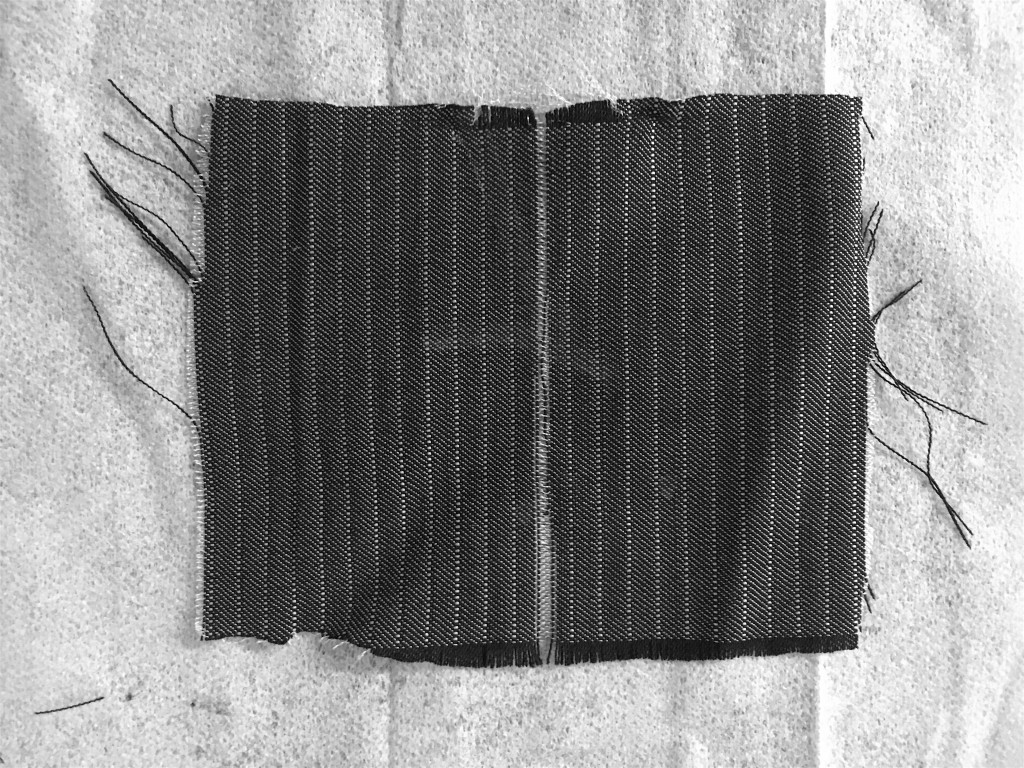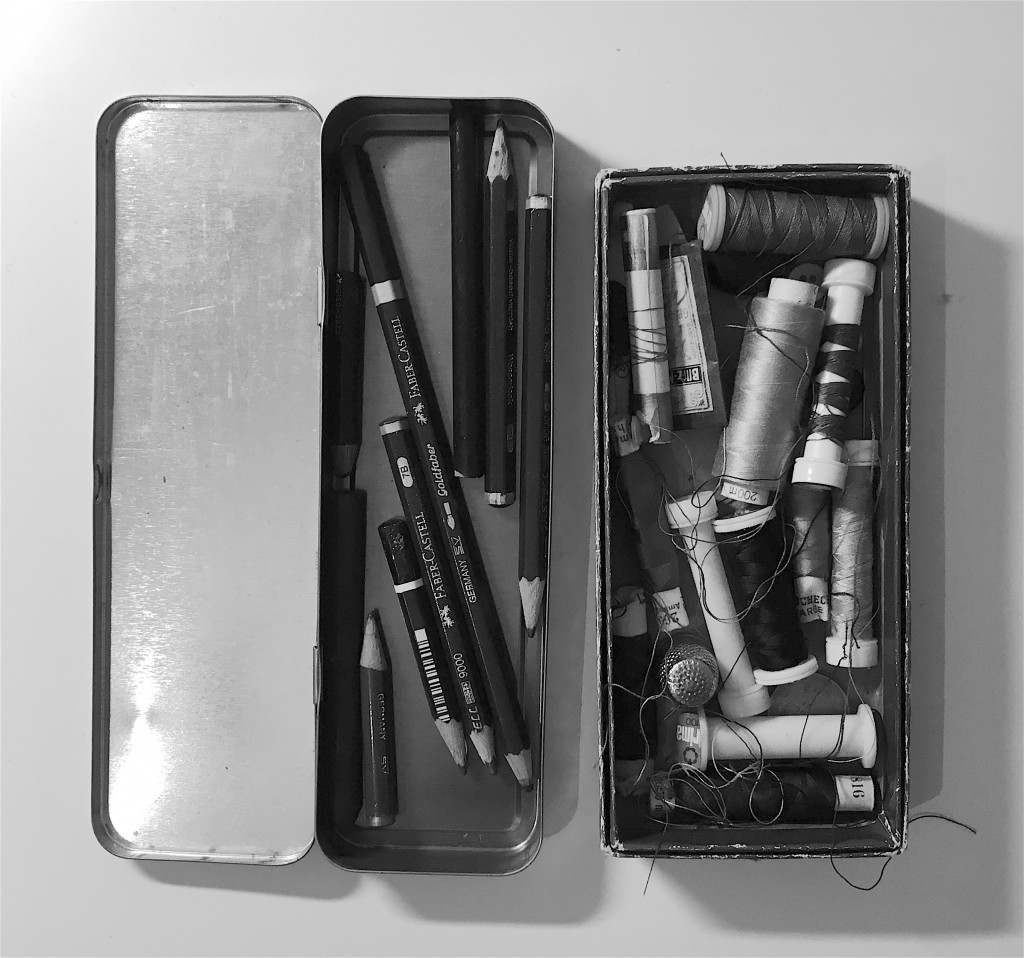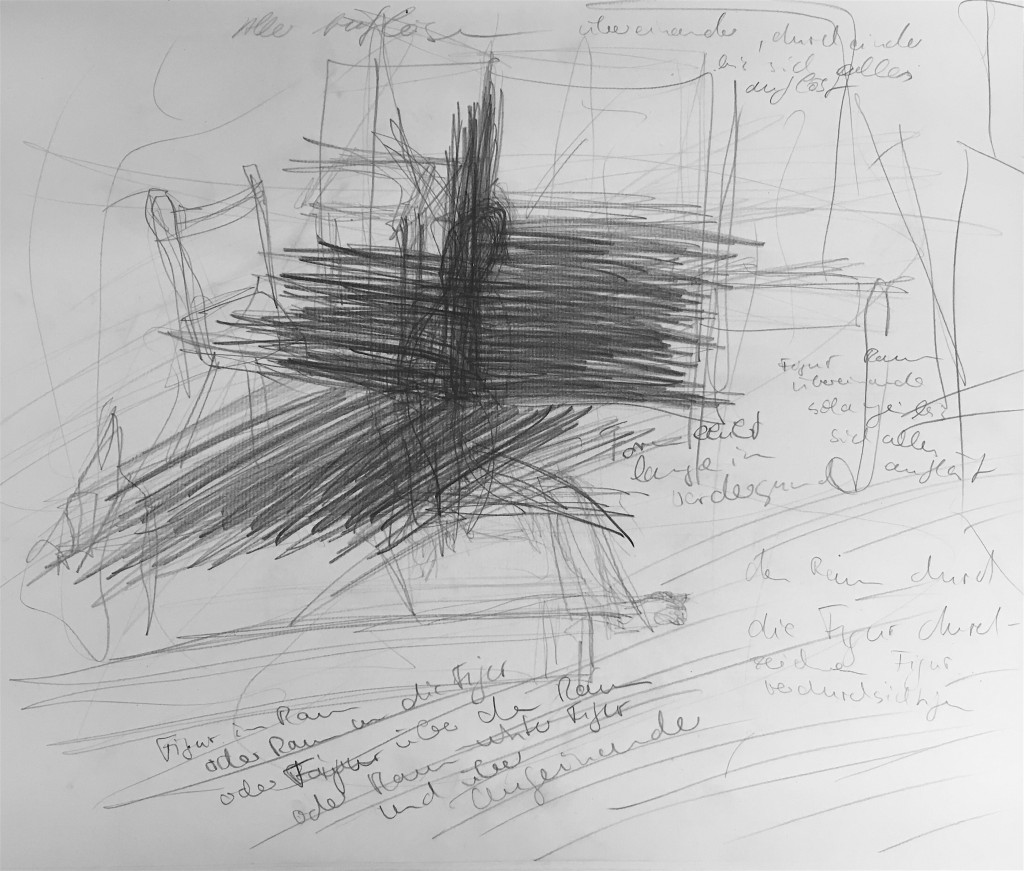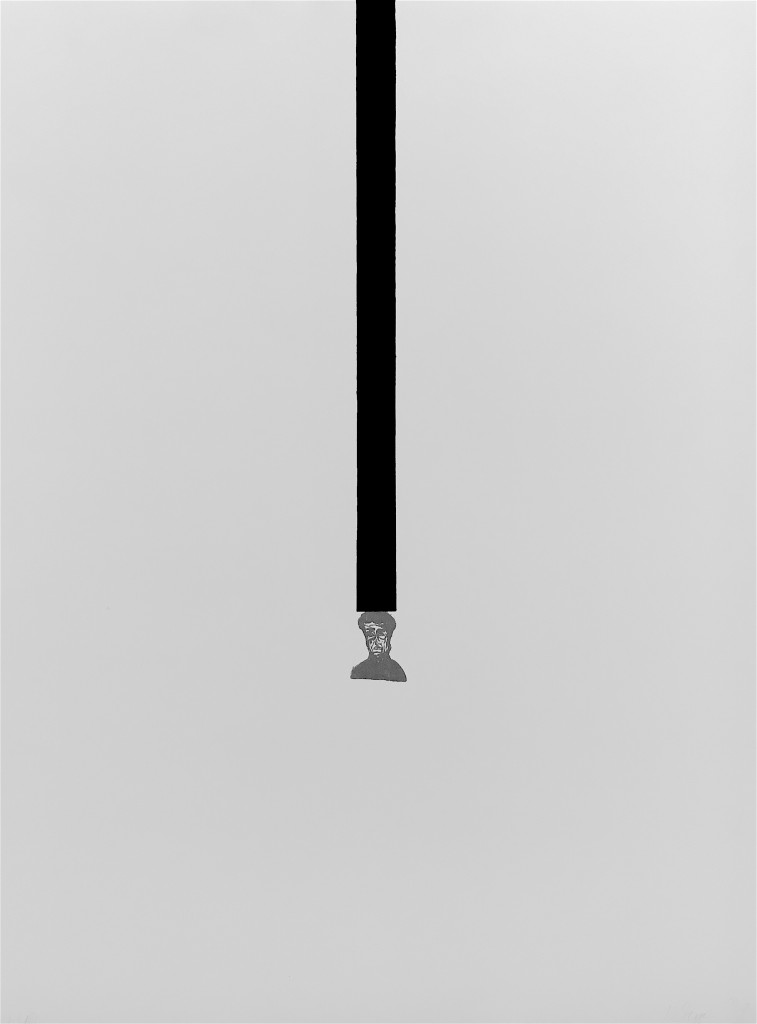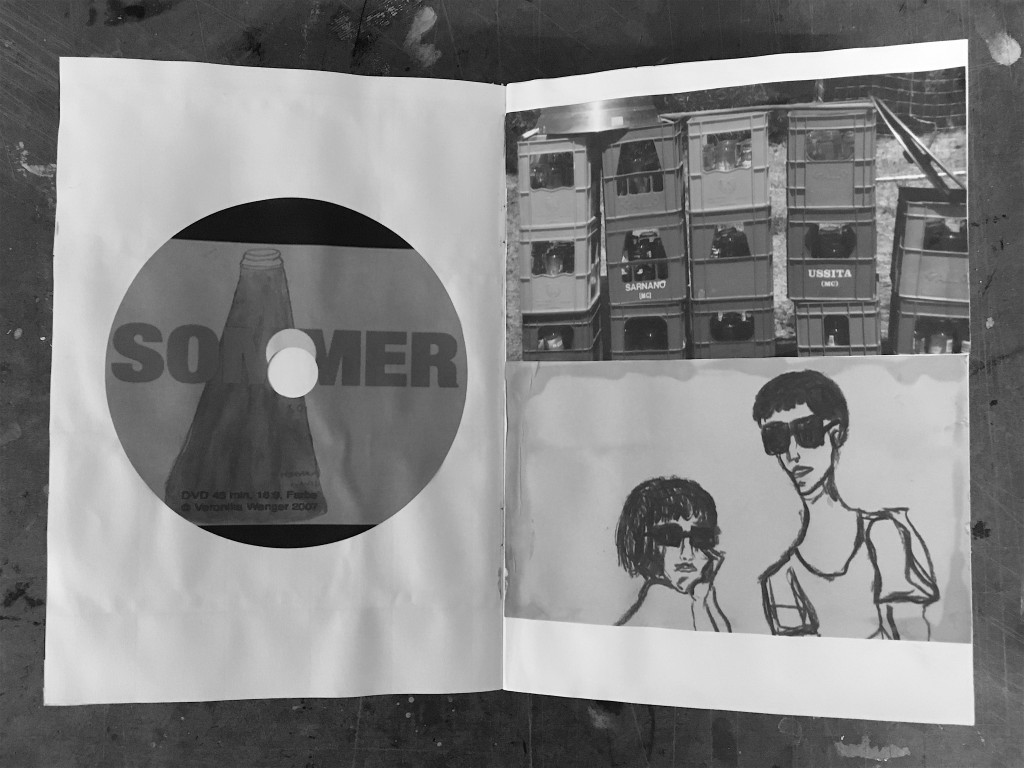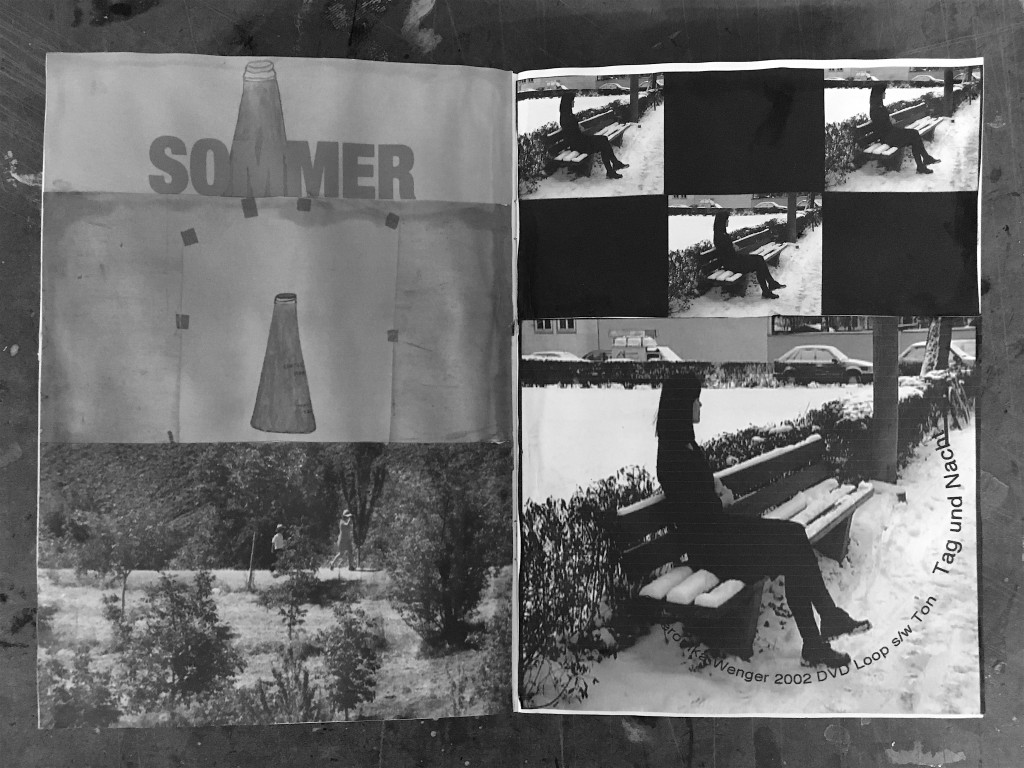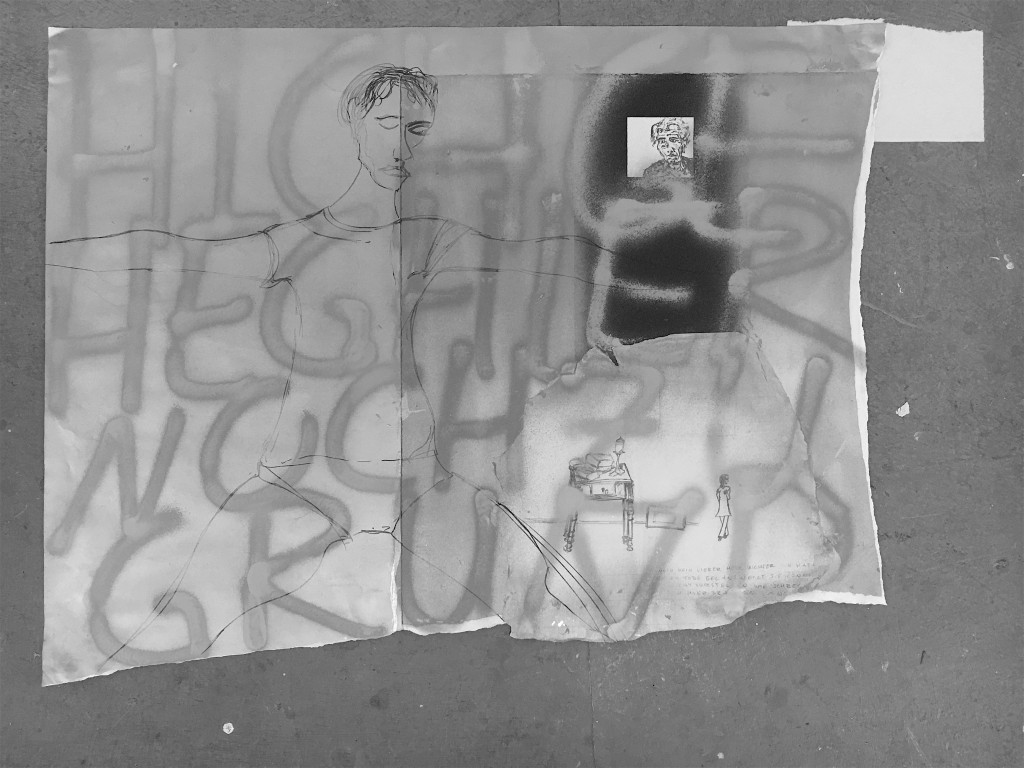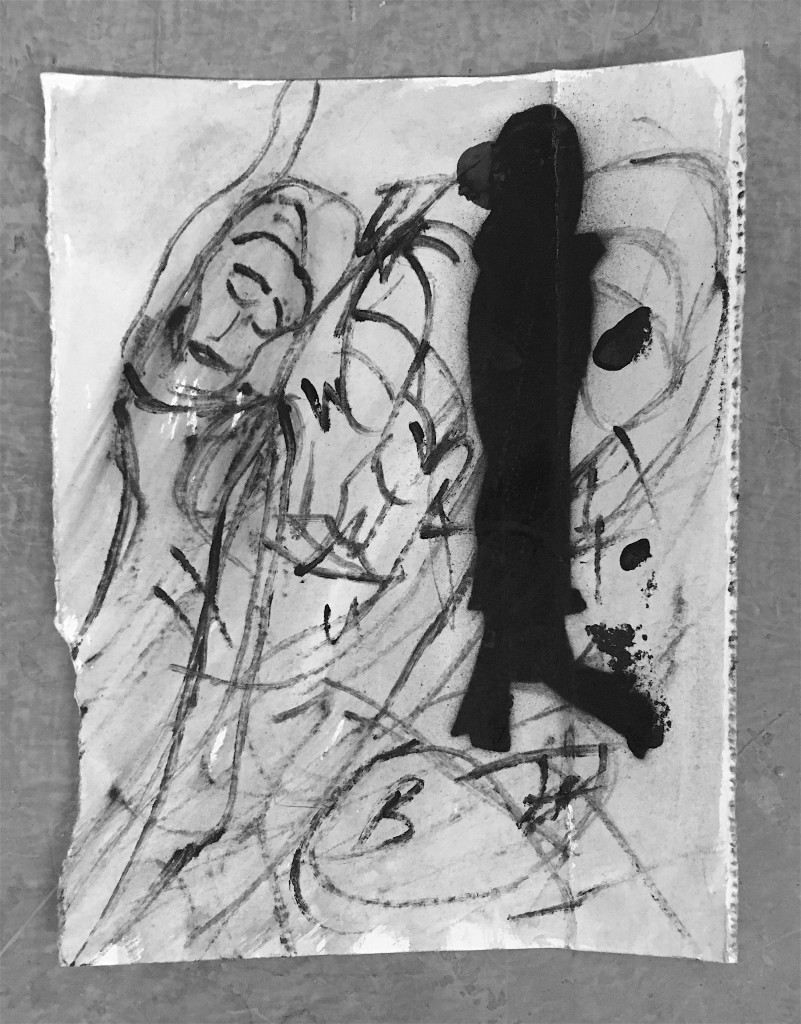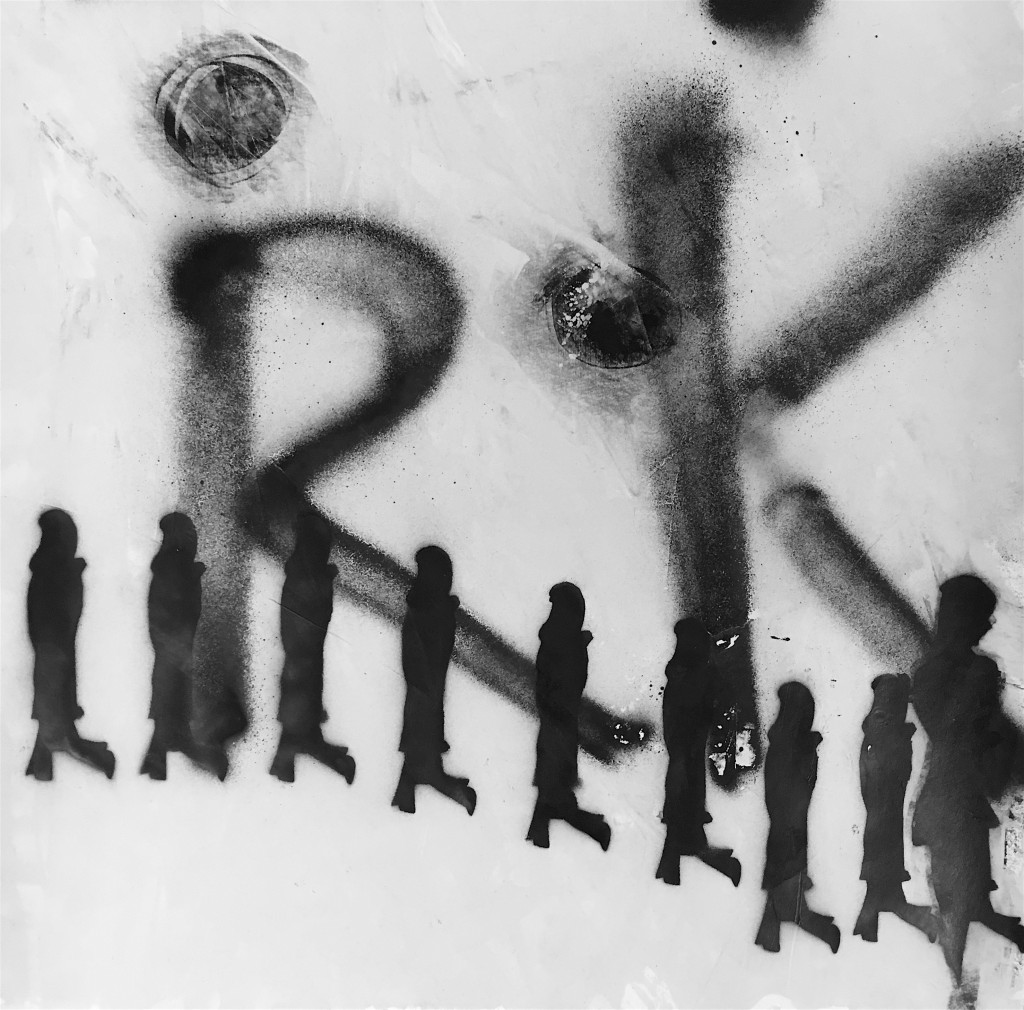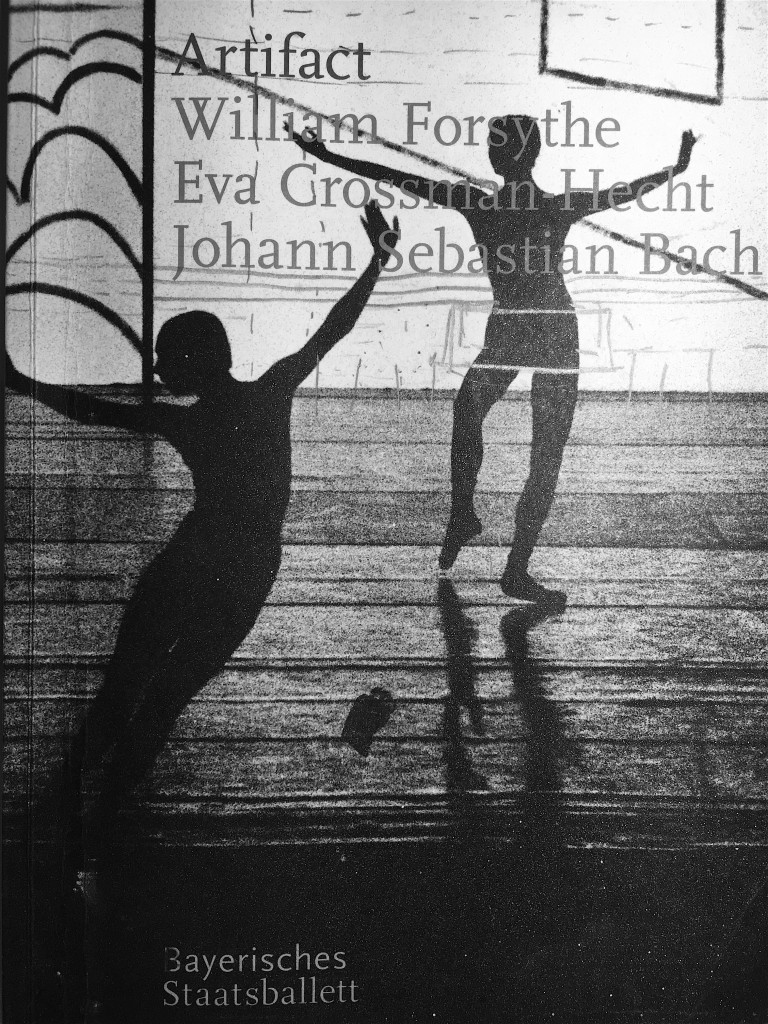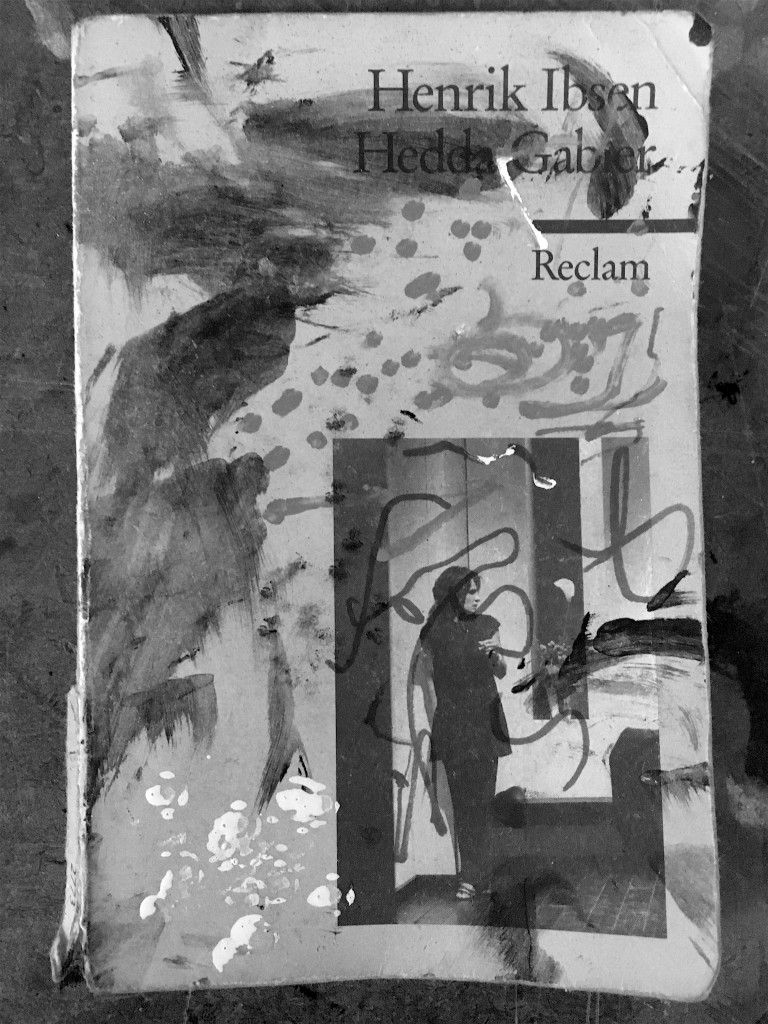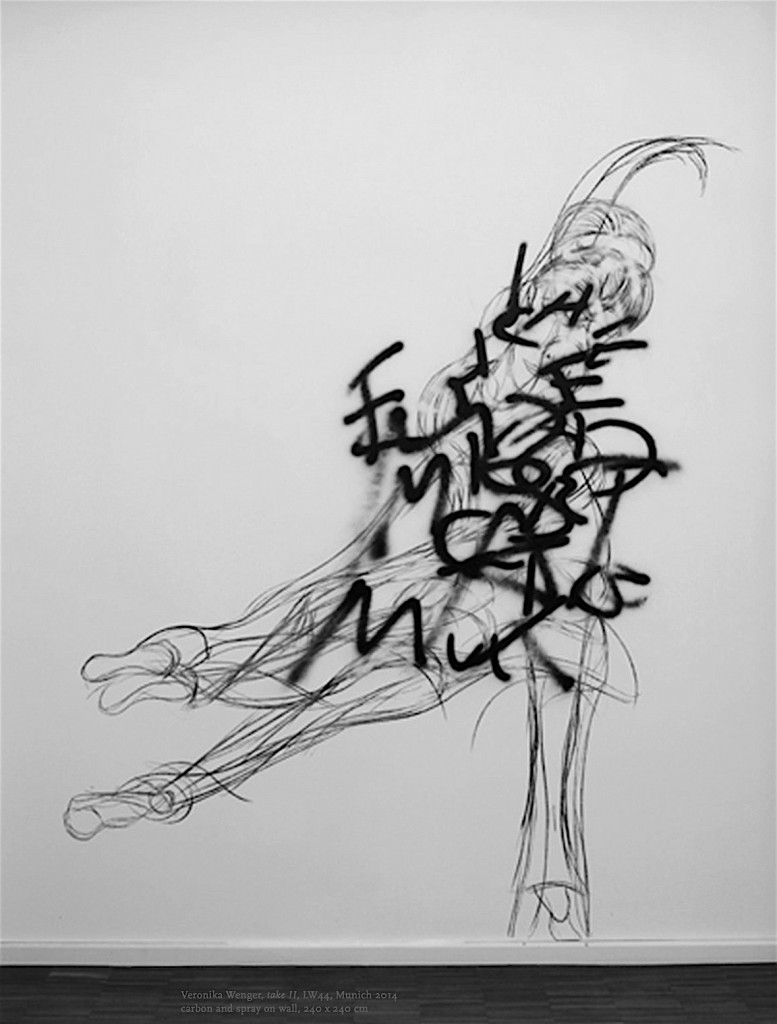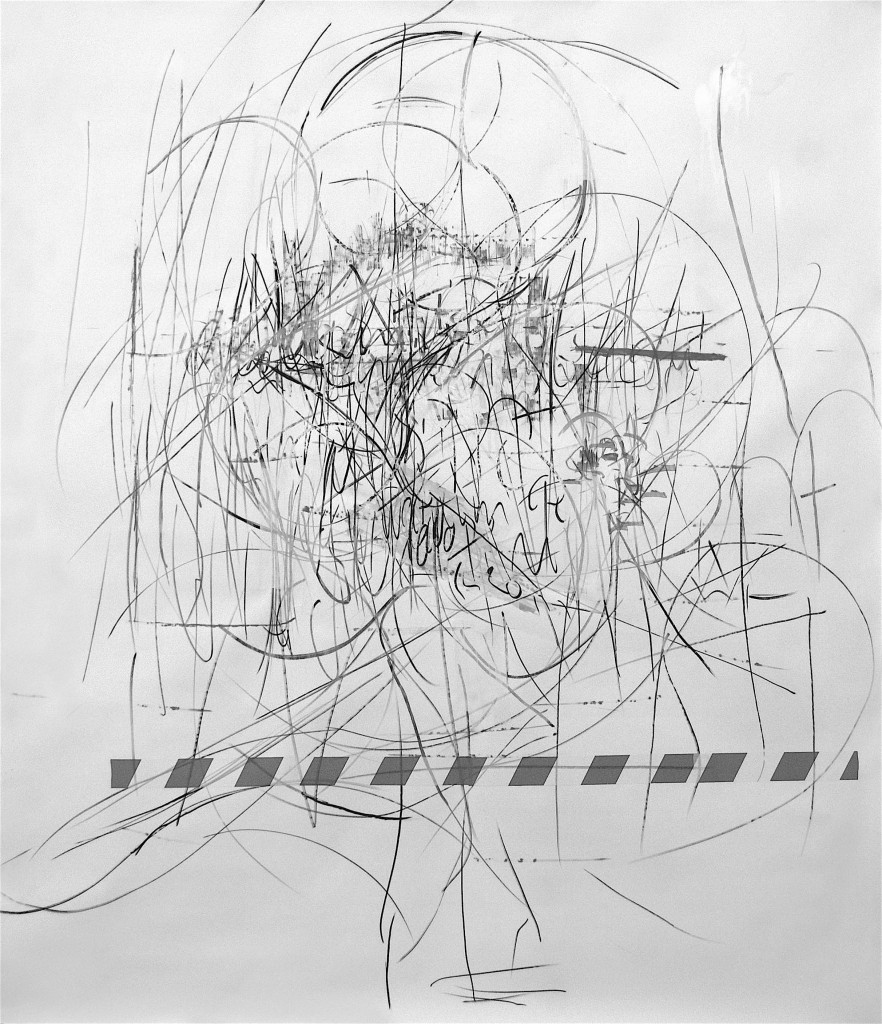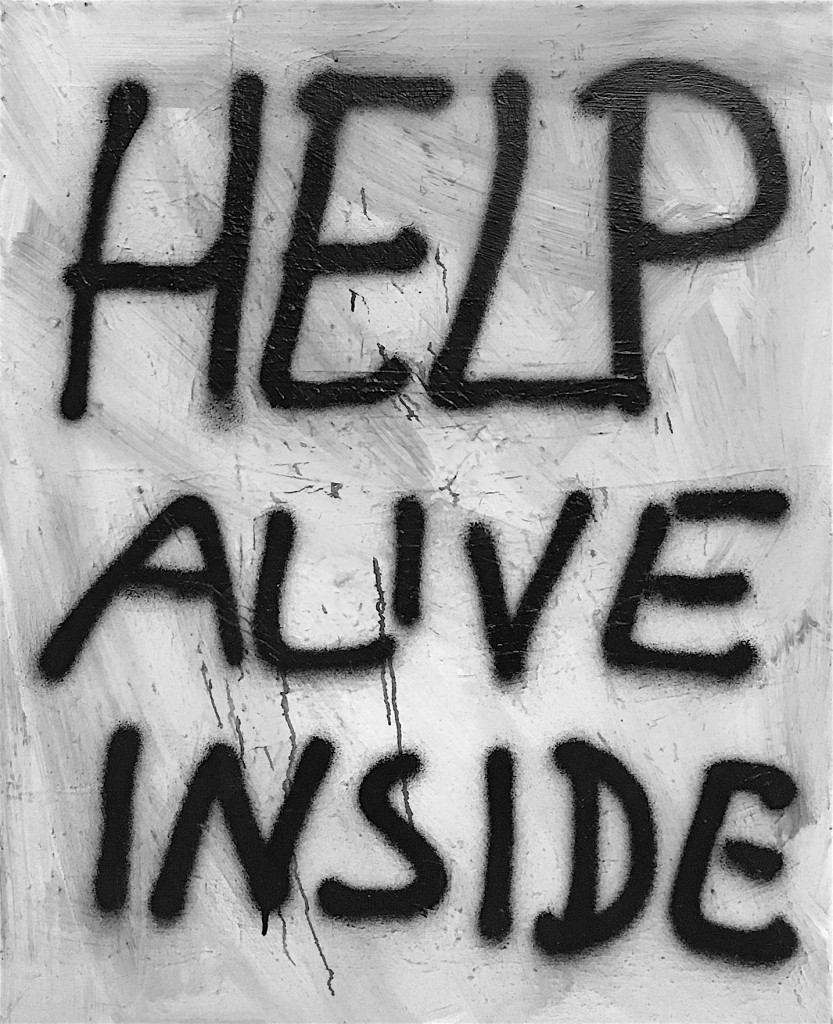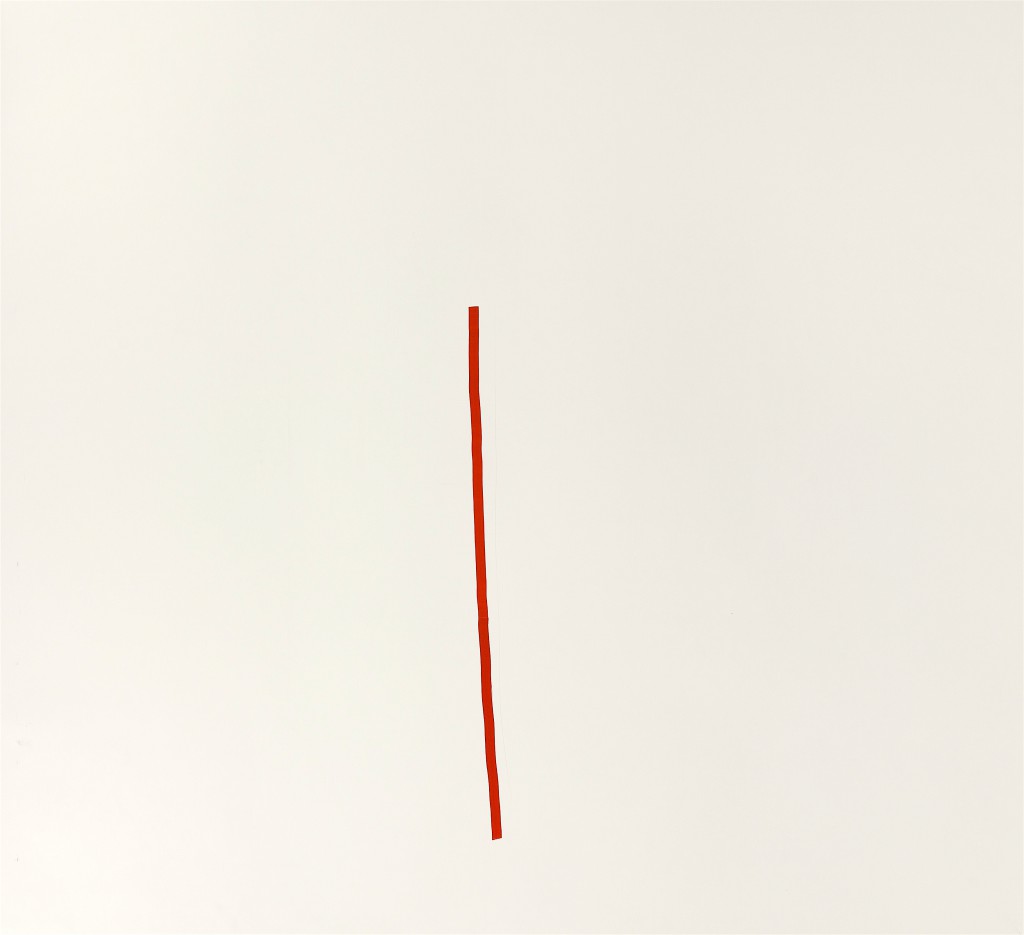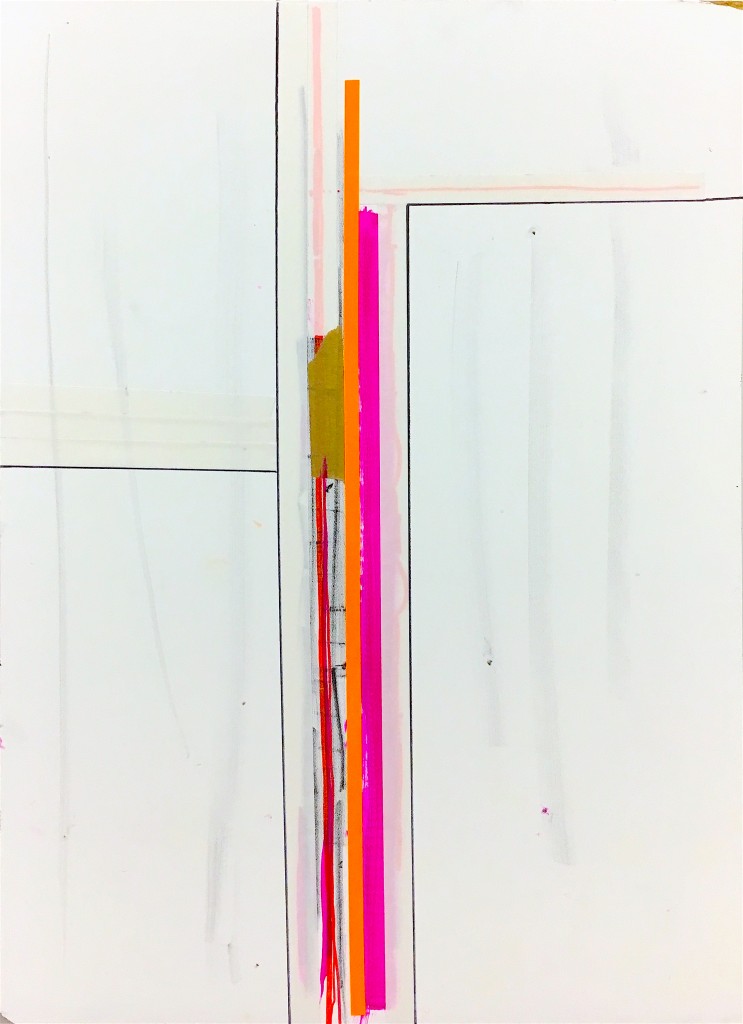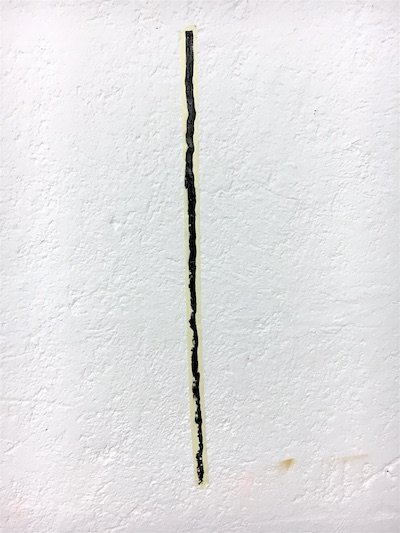The line inside the drawing
The first line I encountered was the physical ‘strand’. Through the strand of sewing thread I realized what the meaning of a line is: ‘gathering the strand’, ‘strand – straight’. A surface, built from single lines, can be defined by ‘gathering the strand’, ( ‘strand – straight’ in different sizes and numbers of surfaces).It appears as a wonderful line. This treatment of line is used in tailoring to get a really straight line.
Before I studied art, I learnt tailoring, Haute – Couture tailoring. During this form of education you are required to handle both sewing and drawing, including drawing with scissors to form ‘cut outs’, drawing as design and figure drawing. I saw the similarities between drawing and sewing. You can do the same with a needle and textile strand as with paper and pencil. You gradually develop understanding in both disciplines of what a line can be.
The line both separates and unites, creating two surfaces in sharp contact. A line creates an edge, a seam, a cut, a format. You are made conscious of how material can be transformed and how idea, imagination and time and are created and revealed by the line. The line reveals the expression, the form and the ‘ductus’ of the actor. The ‘performance’ of tailoring and drawing has to be confident to lead the line. When your hand is called “the golden hand“ by your master craftswoman, then you’ve got the right ductus. The difference is in the final material form, in one case it is clothing and in the other it is drawing.
I chose the line for drawing and started with the pencil. I used the pencil to visually configure reality, or more precisely configure perceived reality. I was drawing. The line was the medium of the drawing, an instrument for visualizing, forming the essential substance of the drawing. I was struggling with the distinctive nature of the material and the attempt to get the most meaningful outcome. I was at the mercy of the pencil!
To free my treatment of line I tried different drawing techniques. One of them was lithography. The technical demands of lithography helped to create a distance and interrupt the familiarity of the drawing process. The challenge of this technique created a new and liberating sense of materiality, color, surface, line and form. Though the flow of the line was as before, the texture of the pencil mark was now replaced by the transforming texture of the crayon in lithography.
A later development was a deeper need to break with the dependence on drawing and to extend into other media and processes. I explored video, film, photography, performance, painting and working collaboratively with other artists. I undertook an increasing depth of research in these different media, expanding the process of drawing into other ways of configuring the perception of reality. I subsequently extended my understanding and treatment of drawing processes through the exploration of other possibilities for visualising space, color, time, movement and expanded the narrative possibilities of drawing. Film and video gradually became the most effective way to let the line move from A to B, to fuse the different realities and to visualize time.
The film “summer“2007 most effectively articulates my expanding relationship with these different media and their close connection with my drawing process. The whole story of the film I had developed was now in connection with my previous drawing practice, combining drawing processes with different media and perceptions of reality. They were all ‘actors’, appearing as drawn persona, effectively performing as ‘real’ actors as in a movie, interacting and questioning what is real, what is drawing, what is film, what is photography; in essence questioning the complex relationship between the symbolic language of film and documentary footage of reality. At this time, through using drawing, video, photography and sound, I wanted to search out the possibilities of the interior imagination, through engaging in different approaches to perception and creative performance.
The persistent working with series of drawings, with film and photography, through repetition and connection with subtle variations distilled to repeating cycles, to interconnected references between works, created a rhythm and subtle variations of context and readings. In the deep desire to organize this increasing flux I was able to focus this process through the unconscious emergence of an archetypal figure; a mostly drawn persona who connected all these works. She weaves her subconscious and conscious presence through all the works and effectively forms a unifying presence.
This was a perfect unconscious, then conscious solution, to take me back to the power of line through drawing. This was a new encounter. I met again and recognized the visual power of ‘rhythm’. This rhythm in my practice brought me to the group of ‘Rhythm Section’. Rhythm Section is a group of artists, who search for rhythm in fine art. This development provoked in me a desire to engage in a new enquiry to consider what rhythm is; rhythm in fine art, film and rhythm in general.
For a long time I was interested in the work of William Forsythe, the American dancer and choreographer who creatively engaged with the grammar, language and internal logic of dance. He became a personal inspiration for me, instigating a new creative project with a focus on rhythm. My interest in William Forsythe in turn connected me to Hedda Gabler, the protagonist of Ibsen, (who danced herself to exhaustion). Hedda Gabler became the inspiration for a film project I conceived in 2009.
Hedda Gabler gave me new inspiration. Access to her text, her dialog and letters provoked in me a deeper connection with language, relationship and understanding of our surrounding world….without straining to significance, without using overt narrative, but subtlely serving as a vehicle for understanding of language, letters and the agreed structure and order of effective communication. This experience formed a new understanding and the basis for a revitalized and informed re-engagement with the drawing process.
The choreographer, William Forsythe, fascinated me with his historical references, with his relationship to ballet as structure and choreography as ‘embodied’ knowledge, particularly in his understanding and creative exploration of the grammar and language of physical movement in dance. In collaboration with the artists of Rhythm Section I absorbed an understanding of the different forms of rhythm, and after this long journey I came back to drawing; drawing, which articulates both perception and description through line, expressing thought content, form, composition, rhythm and color.
Hedda Gabler gave me the connection to text, Forsythe the connection to dance and Rhythm Section the rhythm the reconnection to drawing and the creative expressive use of line.
In 2015 Karin Wimmer wrote about my work in the catalog ‘Rhythm Method Volume II’ Stating in the publication ‘The inner necessity’, “Wenger uses writing, shapes and lines to convey a compositional statement about the image. She believes that these three components strike a balance between disorganization and form.”
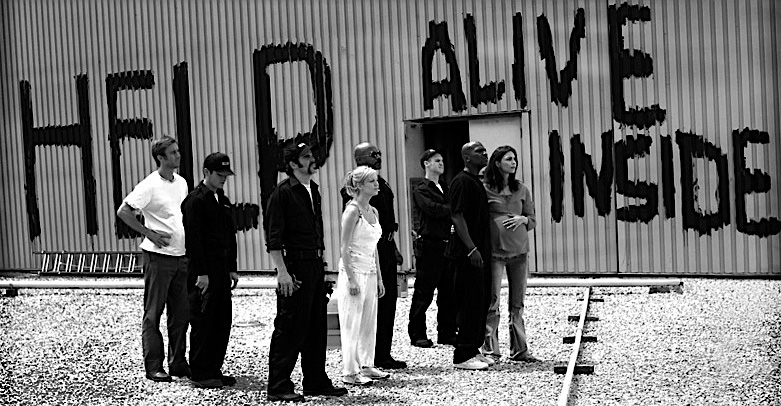
The study of both film and film analysis brought me to another important development in my work, to the cult of ‘Zombies’. My work ‘Help alive inside’ forms a creative reference to the cultural phenomenon of Zombies. ‘Help alive inside’ acts here as a kind of codex. This work brings to the visual surface a mental (psychic) and psychological layer. This unconscious material is primarily what my drawings seek to convey to the viewer. My drawings were subsequently often referred to as ‘psychic abstractions’.
These visual and psychological references reflect on my intense and sometimes impulsive need for expression of compelling unconscious material which underlies the more rational analytical aspects of my creative practice. As a consequence of this necessary creative relationship between conscious and unconscious material, a process of construction and deconstruction is enacted. However, this material is always constrained and ordered in deference to compositional balance, to the order of facts, format, and the principles of coherent visual communication.
This complex conscious and unconscious relational material forms a tensile and dynamic visual manifestation of line and color. I seek to assimilate and fully express this complex exchange within the process of articulating line; through the intensive concentration and performance of selecting colour and forming the movement of the line, so that the full complexity of exchange is held within the drawing process.
‘Help alive inside’ – the salvation from inside the drawing.
Philosophically, I think that my creative practice corresponds in greater part with a ‘phenomenological’ approach; to a preoccupation with observation and the subjective/poetic nature of perception. I seek to visualize, through my drawings, my perception and comprehension of the world. I try to find a possibility by way of drawing, to find a balance; an effective transformative form for documenting the whole; a taxonomy, a chronology, chorology, a morphology.
Sometimes I need a compositional figure, a character, a person to form both a subject and as a vehicle through which I can consider personal relationships to the world; a person/persona who functions as a point of reference. This person, figure, character, will inevitably become subordinate to the internal formal logic and necessity of the drawing process. In the process of drawing, this image representation of the person will be destroyed to allow the deeper necessity of the emergent internal and formal logic of the line of the drawing to be primary driver in the composition. It is the narrative that initially causes me to draw. This cause, emanating from my interest in the writings of Hedda Gabler and the choreography of Forsythe, gives me, in a non-binding but still dependable way a means of connecting with a person, figure, character as the preliminary anchor point and focus for the direction of the drawing. As the drawing progresses this initial narrative way of drawing will be subsumed by the evolving drawing process of construction and deconstruction. From the compositional process arises an expressive articulation of line, that retains its strength from the initial source. The narrative part of the work will be submerged and subsumed within the drawing; to be precise: swallowed by the line.
The line is movement from A to B, connecting and stringing together moments, a beginning and end or endless space, time, motion, or focal point, fixing our perceived world and emotions, providing meanings. The line could be a piece of the whole or alternatively could be the whole or simply just a line by itself. The line on the surface could be part of an object or letter, could be everything or simply a line.
Drawing is composition, form, image, reproduction, emotion, abstraction, representation. The line is part of a drawing, fixed on a surface. The drawing for me is more like cutting out something from the surface, to get an outline or pattern of lines to form a sketch or final drawing. Drawing is separating and defining the form, shape and volume.
The ‘free’ line opens up the ‘inside’ of the drawing. The drawing becomes open, referencing part of the surrounding perceived reality. The line becomes its own reality. With the free lines added together as different lines, colors, directions and material, I get a conjunction on the surface, a balance in the creation of a work telling its own story. The drawing material is serving the message of the drawing. Working with lines, the material is serving itself. The material, lines, surface and composition form references through the selective application of a few lines in different colors and arrangement.
